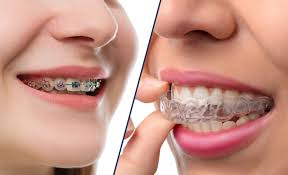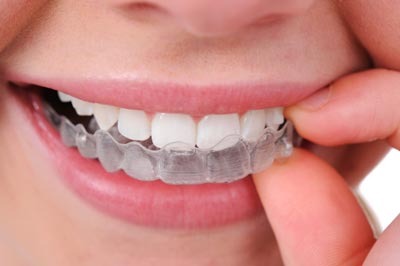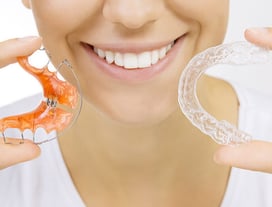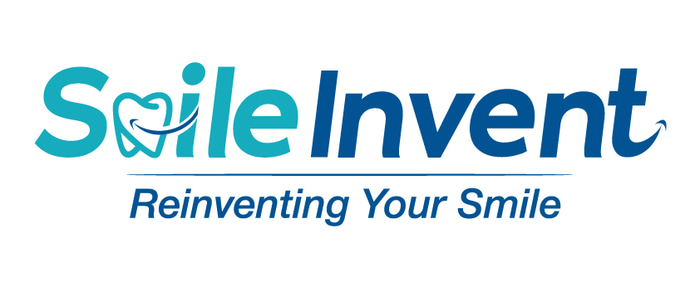Orthodontic Services
Braces (traditional and clear aligners)
Braces, both traditional and clear aligners, are orthodontic devices used to correct teeth alignment, improve bite issues (malocclusion), and enhance dental aesthetics. The choice between the two depends on the patient's needs, lifestyle, and preferences.
1. Traditional Braces
Traditional braces consist of metal brackets attached to the teeth, connected by wires and elastic bands that gradually move the teeth into the desired position.
Key Features:
Material: Usually metal, though ceramic or tooth-colored brackets are available for a less noticeable look.
Visibility: Metal braces are visible, while ceramic braces blend better with natural teeth.
Effectiveness: Highly effective for complex orthodontic issues like severe crowding, bite misalignment, or rotated teeth.
Advantages:
Suitable for all ages and complex cases.
Precise control over tooth movement.
Often more affordable than aligners.


Disadvantages:
Visible, which can be a cosmetic concern.
Can cause discomfort (tightening wires or brackets rubbing against cheeks).
Requires strict oral hygiene to prevent plaque buildup around brackets.
Maintenance:
Regular visits (every 4-6 weeks) for adjustments.
Avoid sticky, hard, or chewy foods that can damage braces.
Use a soft-bristled toothbrush and interdental brushes for cleaning.
2. Clear Aligners (e.g., Invisalign)
Clear aligners are transparent, removable trays custom-made to fit over the teeth. They apply gentle pressure to shift teeth into alignment over time.
Key Features:
Material: Made of medical-grade plastic.
Appearance: Nearly invisible, making them a popular choice for adults and teens.
Customization: A series of aligners are provided, each worn for about 1-2 weeks.
Advantages:
Virtually invisible, ideal for those who prioritize aesthetics.
Removable, making it easier to eat and maintain oral hygiene.
Typically more comfortable, with no metal wires or brackets.
Disadvantages:
Not suitable for very complex cases.
Requires discipline to wear for 20-22 hours daily.
More expensive than traditional braces in many cases.
Maintenance:
Clean aligners daily with water or a special cleaning solution.
Brush and floss teeth before wearing aligners to prevent trapping food particles.
Replace aligners as directed by the orthodontist (usually every 1-2 weeks).
Both options are effective when used under the guidance of a qualified orthodontist. Regular check-ups and adherence to instructions are crucial for achieving the best results.
Invisalign
Invisalign is a brand of clear aligners used in orthodontics to straighten teeth and correct bite issues. It offers a discreet alternative to traditional metal braces, making it a popular choice for both teens and adults seeking a more aesthetic and comfortable option.
How Invisalign Works:
1. Consultation:
A dentist or orthodontist evaluates your teeth using X-rays, photos, and digital scans or impressions. A customized treatment plan is created.
2. Custom Aligners:
A series of clear, removable plastic trays (aligners) are manufactured based on your treatment plan. Each aligner gradually shifts teeth into the desired position.
3. Wearing Aligners:
Aligners must be worn for 20-22 hours daily, removed only for eating, drinking (except water), brushing, and flossing.
Aligners are replaced every 1-2 weeks as teeth move.


4. Treatment Duration:
Typically takes 6-18 months, depending on the complexity of the case.
5. Retention:
After treatment, a retainer is worn to maintain results.
What Invisalign Treats:
Crowded teeth
Gapped teeth
Overbite
Underbite
Crossbite
Open bite
Minor to moderate orthodontic misalignments
Benefits of Invisalign:
1. Discreet Appearance:
Virtually invisible, making it a popular choice for those concerned about aesthetics.
2. Comfort:
Made from smooth plastic, with no metal brackets or wires that can irritate the gums.
3. Removability:
Allows for easy eating and cleaning.
4. Hygiene:
Promotes better oral hygiene since aligners can be removed for brushing and flossing.
5. Fewer Dental Visits:
Requires fewer adjustments compared to braces.
Drawbacks of Invisalign:
Not Suitable for Complex Cases: Severe misalignments may require traditional braces.
Discipline Required: Must be worn consistently for optimal results.
Retainers and orthodontic appliances
Retainers and orthodontic appliances are essential tools used in orthodontics to maintain or improve teeth alignment after active orthodontic treatment with braces or clear aligners. They help prevent teeth from shifting back to their original positions and can address specific bite issues.
1. Retainers
Retainers are devices worn after braces or Invisalign treatment to hold teeth in their new, corrected position. There are two primary types: fixed and removable.
Types of Retainers:
1. Fixed Retainers (Bonded Retainers):
A thin wire is permanently bonded to the back of the teeth, typically the lower front teeth, to prevent them from shifting.
Pros: Discreet, no risk of forgetting to wear it, and highly effective for holding teeth in place.
Cons: Can make cleaning teeth more challenging, as plaque can build up on the wire. Regular check-ups are necessary.


2. Removable Retainers:
Hawley Retainer: Made of a metal wire with an acrylic base that sits against the roof or floor of the mouth. It's custom-made for each patient and can be adjusted if necessary.
Essix Retainer: A clear, plastic tray that fits snugly over the teeth, similar to Invisalign aligners. It's nearly invisible but can wear down over time.
Pros: Comfortable, easy to clean, and can be removed for eating, drinking, and cleaning.
Cons: Must be worn consistently, or teeth may shift.
When Retainers Are Worn:
Full-time wear: Immediately after braces or aligners are removed, retainer wear is typically required for the first few months (usually 20-22 hours per day).
Nighttime wear: Gradually, the wear time is reduced to nighttime only, often for several years or indefinitely, depending on the case.
Maintenance: Regular check-ups with the orthodontist to ensure the retainer is still effective.
2. Orthodontic Appliances
Orthodontic appliances are devices used during the active phase of treatment to help move teeth, correct bite problems, or prepare the mouth for further treatment.
Types of Orthodontic Appliances:
1. Expanders:
Palatal Expander: Used to widen the upper jaw if it's too narrow. It applies gentle pressure to the upper molars, slowly expanding the palate.
Benefits: Helps correct crossbites and creates space for other teeth to align properly.
2. Headgear:
A device that attaches to the braces and wraps around the head or neck, providing additional pressure to move teeth and jaws into proper position.
Types:
Cervical Headgear: Pulls back the upper teeth and jaw.
High-pull Headgear: Used to correct overbites and move the upper jaw back.
Benefits: Effective for correcting bite issues like overbites or underbites.
Cons: Requires patient compliance, as it needs to be worn outside the home.
3. Retraction Appliances:
Space Maintainers: These are used in younger patients when a baby tooth is lost prematurely, preventing the remaining teeth from shifting and blocking the eruption of permanent teeth.
Herbst Appliance: Helps with correcting overbites by moving the lower jaw forward.
4. Rubber Bands (Elastics):
Often used in conjunction with braces to correct bite alignment (e.g., overbite, underbite, or crossbite).
Benefits: Assist in shifting teeth and improving jaw alignment.
5. TADs (Temporary Anchorage Devices):
Small screws or plates that are temporarily placed into the jawbone to provide additional anchorage for moving teeth. They are particularly useful in complex cases.
Benefits: Allows for greater precision in tooth movement.
Importance of Retainers and Orthodontic Appliances:
Retainers are essential for ensuring that teeth remain in their corrected position after the active phase of orthodontic treatment.
Orthodontic appliances help address complex bite problems and tooth misalignment, speeding up the treatment process or providing additional support when needed.
Care and Maintenance:
For Retainers:
Clean regularly with a toothbrush (no toothpaste) and lukewarm water. Avoid hot water to prevent warping.
Store in a protective case when not in use to prevent damage.
Visit the orthodontist regularly to ensure the retainer is still effective.
For Orthodontic Appliances:
Clean according to your orthodontist’s instructions.
Ensure you wear the appliance as directed for best results.
Conclusion:
Both retainers and orthodontic appliances are essential for achieving long-term orthodontic success. Retainers prevent the teeth from shifting post-treatment, while orthodontic appliances address a variety of issues during active treatment. It's crucial to follow your orthodontist's recommendations for wear time, maintenance, and follow-up visits to achieve optimal results.
